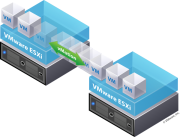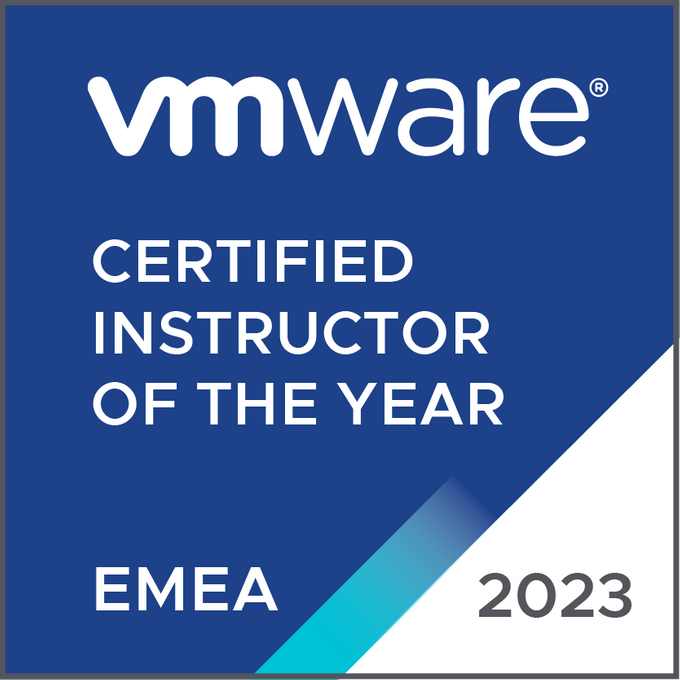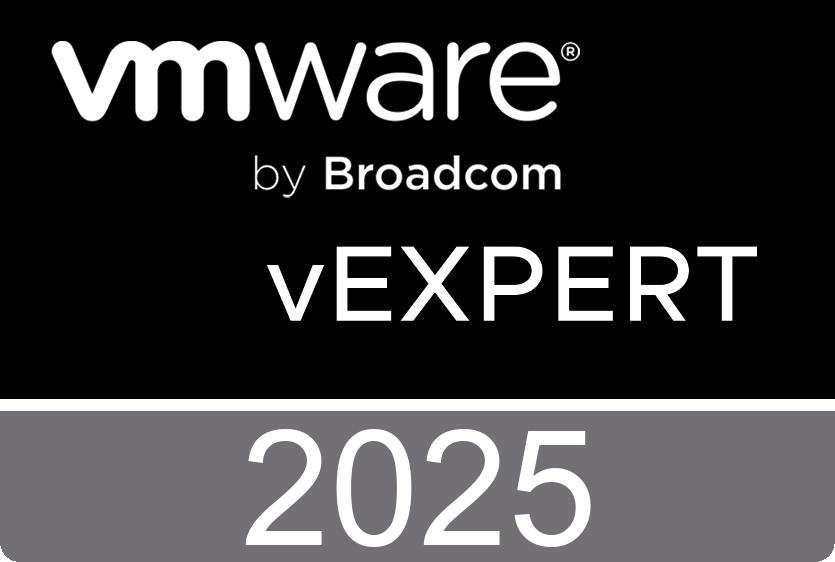Monday, October 11. 2010
VMworld 2010 Copenhagen – Monday
The best VCI Awards were handed out by Andy Cary, Undeleeb Din and Chris Cottam . Brian Rice gave us an insight into the Education Road Map and the Certification Road Map. The VCI Program session was presented by David Day. Although a lot of information is still under NDA, I was able to shoot some video footage.
VMworld 2010 Copenhagen Interview - Pablo Roesch
This afternoon, just after the VMworld Developer Day, I had an interview with Pablo Roesch. He’s responsible for all aspects of product marketing the powerful vSphere APIs. Enabling Partner and End User customers. Managing editor for VMware Developer Center Blog and the VMware Developer Community http://developer.vmware.com.
Follow him on twitter @heyitspablo
Sunday, October 10. 2010
VMworld 2010 Copenhagen – Sunday
Yes, we’re on our way to VMware’s VMworld event. I’m travelling with Viktor van den Berg and we flew from Amsterdam to Copenhagen with a KLM Boeing 737-400. Just before boarding I did a little interview with Viktor who’s the head of the Dutch VMUG and also a board member of the global VMware User Group (VMUG). His daily job is Product manager / Technical Trainer at XTG. I asked him about his expectations.
Saturday, October 9. 2010
Injecting drivers into the ESXI installer
This article describes how to inject drivers into the VMware ESXi 4.1 installer. It’s written by Ernst Cozijnsen, he already published a great article regarding Deploying VMware ESXi 4.1 in the enterprise. All you need is a Fedora core 13 32 bit virtual machine which can be downloaded from http://www.thoughtpolice.co.uk/vmware/ . This website contains many ready to run virtual appliances with all kinds of open source operating systems.
The following part will show you how to:
- Extracting the driver from driver cd/dvd/floppy/tape/ls120/zip/jazz
- Extracting sys.vgz ESXi installer ramdrive
- Moving the driver(s) into place
- Compressing the newly build sys.vgz structure
- Inserting driver package in the imagedd.bz2 file
Friday, October 8. 2010
Deploying VMware ESXi 4.1 the enterprise way
My ex-colleague and virtualization friend Ernst Cozijnsen who works a virtualization subject matter expert over at Capgemini did something awesome this week. We philosophised about unravelling the ESXi boot process in a few (long) phone calls the past few days and just before the start of the VMworld he actually did the unthinkable. Here’s his description about deploying VMware ESXi 4.1 in the enterprise.
Ok for us the time came to start deploying VMware ESXi 4.1 on some massive servers that rolled into or datacenter. Normally we use RDP (Altiris) for deployment of ESX (native) so naturally we also wanted to deploy VMware ESXi 4.1 in such a way. This article from Eric Wannemacher describes a way to inject ESXi into your RDP PXE boot menu and so giving you the possibility to PXE boot the ESXi installer and start your install.
The downside of this article is that the installer starts directly after booting the ESXi installer and destroys everything in its way including all files on your destination drive. The margin of error when using this specific method is very small and a catastrophic failure can be made very easily without any way of having a safety net. Since these kind of failures can have enormous consequences in a large enterprise environment we had to come up with a way that was more inside our "comfort zone".
Thursday, October 7. 2010
Microsoft Learning: Automating Administration with Windows PowerShell 2.0
This five-day course will be released at the end of October and provides students with the knowledge and skills to utilize Windows PowerShell for administering and automating administration of Windows based servers.
The course is intended for IT Professionals already experienced in general Windows Server and Windows Client administration, including Active Directory administration. No prior experience with any version of Windows PowerShell, or any scripting language, is assumed. After completing this course, students will be able to:
• Explain how Windows PowerShell works.
• Use Windows PowerShell as an interactive, command-line shell.
• Use Core Windows PowerShell cmdlets for everyday purpose.
• Customize the output using Windows PowerShell Formatting Subsystem.
• Explain what Windows Management Instrumentation (WMI) is and how it can be used from Windows PowerShell.
• Manage Active Directory objects using Windows PowerShell cmdlets.
• Write basic Windows PowerShell scripts that execute batches of commands.
• Work with Windows PowerShell’s background jobs and remote administration functionality.
• Master the scripting language of Windows PowerShell.
• Use advanced techniques related to structured programming within Windows PowerShell.
• Automate Windows Server 2008 R2 Administration using Windows PowerShell.
• Identify the best practices for working with Windows PowerShell.
http://www.microsoft.com/learning/en/us/Course.aspx?ID=10325A&Locale=en-us#tab1
Wednesday, October 6. 2010
vCloud Request Manager
VMware will announce an exciting new product, vCloud Request Manager, on October 12, 2010 at VMworld Copenhagen. vCloud Request Manager provides enterprises with enhanced governance and control of vCloud Director based Private Clouds. It does this by:
1. Adding sophisticated approval workflows to provisioning requests,
2. Automatically tracking software license usage as vApps are commissioned and decommissioned
3. Enforcing standardized settings on vCloud Director “Organizations” through the use of policies called “Blueprints”.
Attend this VMLIVE to understand key launch dates, positioning, FAQ and supporting collateral for this key Q4 launch.
VMware vCloud Request Manager - Enhanced Governance and Control of vCloud Director based Private Clouds
Monday, October 4. 2010
VMware Labs presents its latest fling - VIX Java Toolkit
The VIX Java Toolkit allows Java developers to take advantage of VMware VIX API. This is a powerful API that allows for performing in-guest operations on VMs running with vSphere, Workstation, Server and Player.
Give it a whirl, rate and leave your comments at - http://labs.vmware.com/flings/vix-java-toolkit .
The VIX Java Toolkit allows Java developers to take advantage of the VMware VIX API. This is a powerful API that allows for performing in-guest operations on VMs running with vSphere, Workstation, Server, and Player. Java developers who are writing code with the vSphere/VI APIs will find this particularly useful as the vSphere API does not currently provide any functionality for interacting with the guest operating system. In addition, this is helpful for software testing as well as systems administration.
Features
• Provides Java wrapper for the VIX API
• Provides VIX objects and utility code to reduce complexities of using the VIX API
Sunday, October 3. 2010
Diagram & Icon Library – Community
 These are the official icons and diagrams of VMware, Inc. VMware allows the use of these icons and diagrams in derivative works by VMware Community members to illustrate virtualization concepts and IT architectures only if the VMware copyright and terms of use are clearly displayed. The VMware icons and diagrams cannot be altered in any way.
These are the official icons and diagrams of VMware, Inc. VMware allows the use of these icons and diagrams in derivative works by VMware Community members to illustrate virtualization concepts and IT architectures only if the VMware copyright and terms of use are clearly displayed. The VMware icons and diagrams cannot be altered in any way.
VMware PowerPoint Icons and Images - 3Q10 1 of 2
VMware PowerPoint Icons and Images - 3Q10 2 of 2
Saturday, October 2. 2010
Video - The VMware vCloud SDK for .NET Beta
The VMware vCloud API provides support for developers who are building interactive clients of VMware vCloud Director using a RESTful application development style. vCloud API clients and servers communicate over HTTP, exchanging representations of vCloud objects. These representations take the form of XML elements. HTTP GET requests are used to retrieve the current representation of an object, HTTP POST and PUT requests are used to create or modify an object, and HTTP DELETE requests are typically used to delete an object.
The vCloud SDK for .NET is a C# language binding for the vCloud API. It provides a set of C# class libraries and a number of sample applications. The classes and functions in the libraries encapsulate the interfaces, objects, and operations supported by the vCloud API while preserving its RESTful programming style and compatibility with the HTTP protocol family. This vCloud SDK for .NET Programming Guide provides information about setting up the SDK in the SDK.
http://communities.vmware.com/community/beta/vcloudsdk-net
This video (HD) will show you how to use the vCloud SDK for .NET in Visual Basic 2008.




